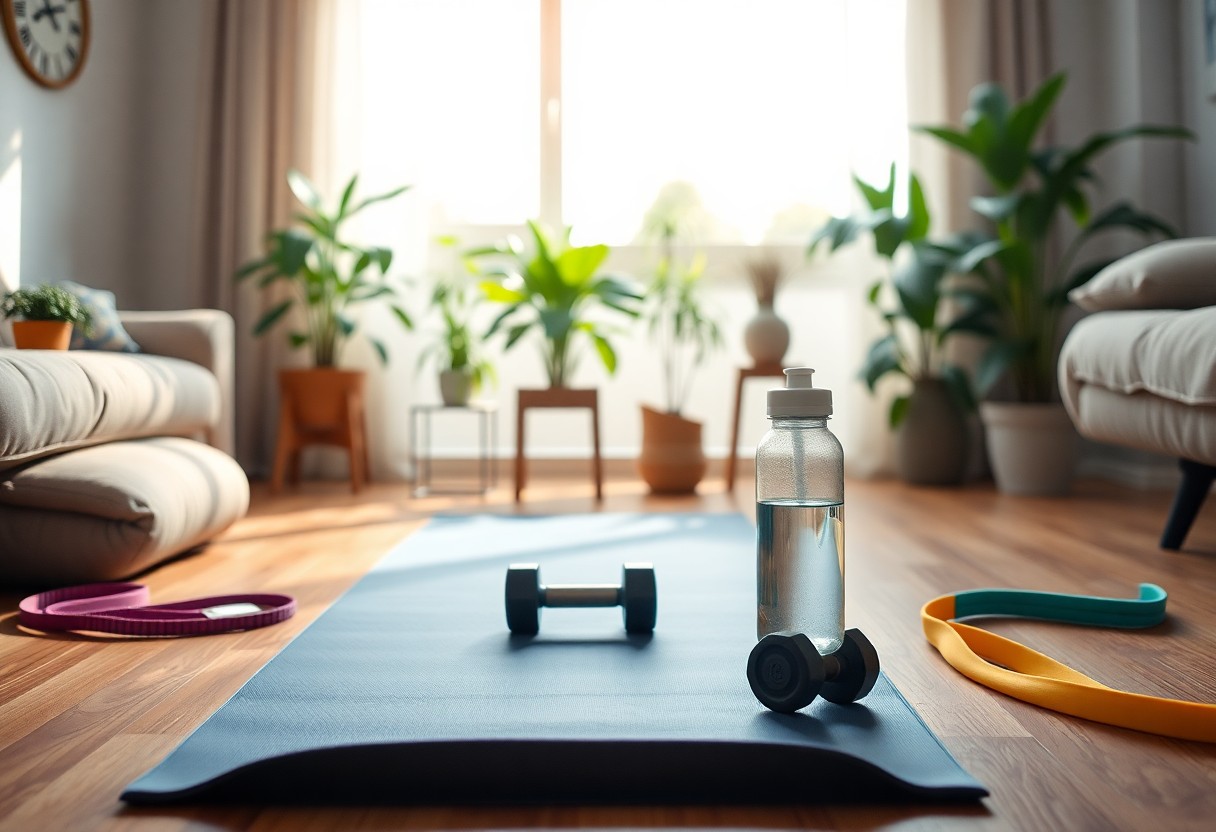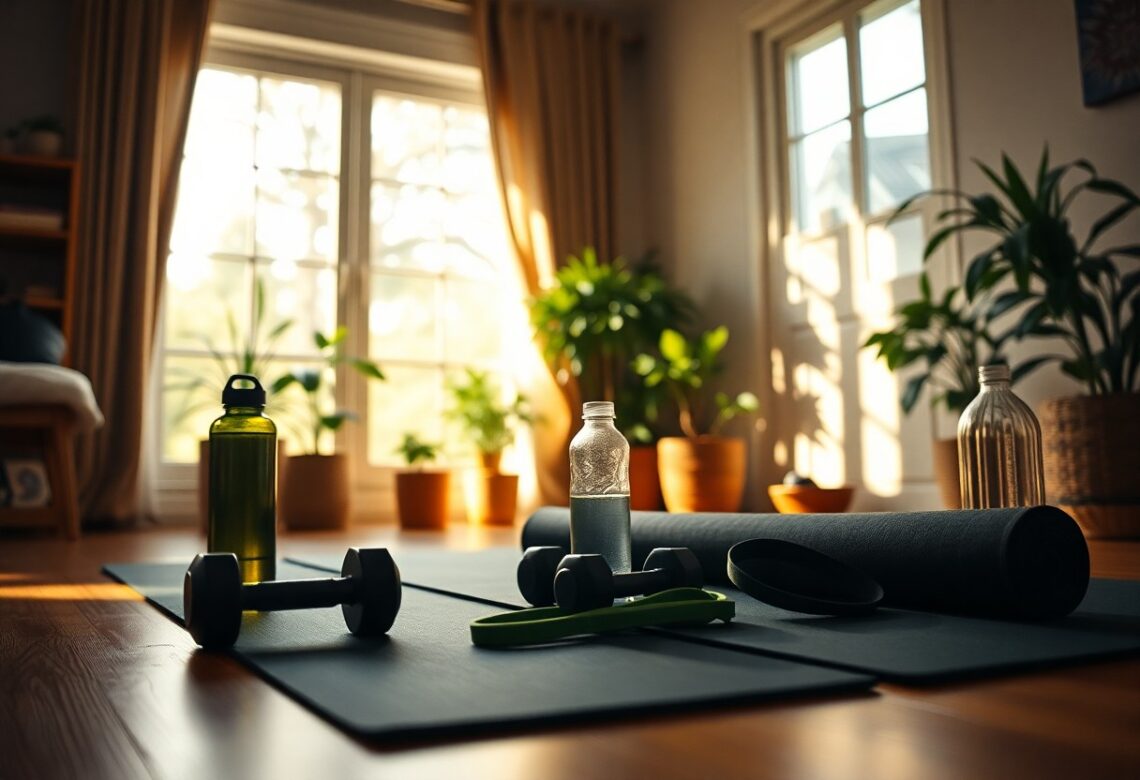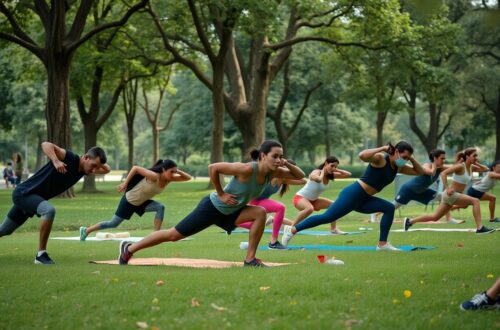Many people seek effective ways to stay active without putting too much strain on their bodies. If you’re looking for a way to work out at home that is gentle yet effective, low-impact workouts might be just what you need. This guide will help you understand what low-impact exercises are, why they are beneficial, and how you can easily incorporate them into your daily routine. You’ll discover simple moves that keep you fit while being easy on your joints.
Key Takeaways:
- Low-impact workouts are gentle on your joints and can be easily done at home, making them perfect for beginners.
- Start with basic exercises like walking, cycling, or yoga to build strength and stamina without risking injury.
- Consistency is key; aim for short sessions a few times a week, gradually increasing the intensity as you feel more comfortable.
Types of Low-Impact Workouts
A variety of low-impact workouts can suit different fitness levels and preferences. These exercises allow you to stay active without putting too much stress on your joints. Here are some popular types:
- Yoga
- Pilates
- Walking
- Cycling
- Swimming
Perceiving these options will help you choose what fits into your routine best.
| Workout Type | Description |
|---|---|
| Yoga | A mind-body exercise that improves flexibility and relaxation. |
| Pilates | An exercise method focusing on core strength and stability. |
| Walking | A simple yet effective way to boost cardiovascular health. |
| Cycling | A great way to get fit while being easy on the joints. |
| Swimming | A full-body workout that builds strength and cardiovascular endurance. |
Cardio Options
Cardio exercises are vital for building endurance and improving heart health. You can maintain this with low-impact options like brisk walking, cycling, or swimming. These activities raise your heart rate without harsh impacts on your joints, making them perfect for everyone.
Strength Training
There’s no need for heavy weights when you engage in strength training. You can use your body weight or light weights to build muscle effectively. Bodyweight exercises, such as squats, push-ups, and planks, are excellent choices.
This type of workout not only enhances your strength but also boosts metabolism. You can easily perform these exercises at home, fitting them into your schedule. Plus, they help improve your overall balance and stability, reducing the risk of injuries.
Benefits of Low-Impact Workouts
It’s important to understand the benefits of low-impact workouts, especially for those starting a fitness journey. These exercises help you stay active without putting too much stress on your joints. They can enhance your overall health, improve your mood, and increase your energy levels. By incorporating low-impact workouts into your routine, you create a sustainable fitness plan that supports your long-term well-being.
Reducing Injury Risk
The risk of injury is lower with low-impact workouts compared to high-impact exercises. These workouts put less strain on your joints, muscles, and bones. This makes them a great option for beginners, older adults, or anyone recovering from an injury. By choosing low-impact options, you can enjoy exercising without the fear of pain or setbacks.
Improving Mobility
You can enhance your mobility significantly through low-impact workouts. These exercises allow you to move your body in gentle ways, improving flexibility and joint function. With regular practice, you may notice that everyday tasks become easier and more comfortable, from bending over to tie your shoes to reaching for items on a shelf.
Improving mobility can be life-changing. Better mobility helps in daily activities and boosts your confidence. You may find it easier to engage in social activities and hobbies you enjoy. Additionally, improved mobility can lead to better posture, reducing discomfort in the back and neck. Including low-impact workouts in your routine will lead to lasting benefits, keeping you active and engaged in your life.
Tips for Effective Home Workouts
Now, you can enhance your home workouts with a few simple tips. Focus on your form to prevent injuries and maximize benefits. Warm up before starting and cool down afterward. Stay hydrated throughout your session. Keep the atmosphere motivating to stay engaged. Here are some quick tips:
- Choose a dedicated workout space.
- Limit distractions, such as your phone or TV.
- Use a mat for comfort and support.
- Set realistic fitness goals.
Recognizing these strategies can help you make the most out of your low-impact workouts.
Setting Up Your Space
With a proper setup, your home workouts can be more enjoyable and effective. Find a quiet space that is free from distractions. All you need is enough room to move comfortably. Make sure you have access to necessary equipment, like weights or resistance bands, if needed. A yoga mat can provide extra support for floor exercises. Consider adding some motivation, like inspiring quotes or your favorite music, to keep you energized.
Creating a Routine
On your journey toward better fitness, establishing a workout routine is key. Make a schedule that fits your lifestyle and stick to it. Whether it’s 30 minutes three times a week or 15 minutes every day, consistency is what matters. Choose activities you enjoy so that you look forward to each session. Mix in different workouts to target various muscle groups. Consider tracking your progress to see improvements over time.
Your routine should be flexible but structured. This helps you stay on track while still allowing for adjustments. If you’re feeling tired, a gentle stretching session could replace a full workout. By switching up your approach, you’ll maintain your interest and motivation. Find what works best for you and embrace the journey toward a healthier lifestyle.

Step-by-Step Guide to Starting
Unlike high-intensity workouts, low-impact exercises are gentle on your body. To begin your low-impact journey at home, follow this simple step-by-step guide. It will help you build a routine that feels good and suits your lifestyle.
Equipment and Space
| Find a Comfortable Spot | Choose an area with enough space for movement. |
| Gather Basic Equipment | Consider using a yoga mat, light weights, or resistance bands. |
| Wear Comfortable Clothes | Dress in clothes that allow easy movement and comfort. |
Warm-Up Exercises
Guide your body gently into the workout with warm-up exercises. Start with simple movements like arm circles or leg swings. These light stretches get your blood flowing and prepare your muscles for exercise. Spending about 5 to 10 minutes on warm-ups can help prevent injuries and enhance your performance.
Sample Workout Routine
Guide your fitness journey by following a sample workout routine. Start with 20 minutes, focusing on low-impact exercises that keep your heart healthy and your muscles strong. You can mix in body weight movements and light resistance activities.
Sample routines often include exercises like squats, seated leg lifts, and wall push-ups. For example, try 10 squats followed by 10 seated leg lifts and 5 wall push-ups. Take short breaks between sets to stay energized. Adjust the repetitions according to your fitness level and enjoy the process!

Factors to Consider Before Starting
Keep these key points in mind before entering into low-impact workouts at home:
- Your available space
- The type of equipment you may need
- Time you can dedicate to workouts
- Your motivation and support system
Assume that, with these factors in mind, you can create an effective workout plan that suits your lifestyle.
Fitness Level
Any workout plan should match your fitness level. If you’re new to exercise, start slowly. Many low-impact workouts can be adjusted for beginners. Focus on building strength and flexibility before moving to more intense exercises.
Health Conditions
Now, consider any health conditions that may affect your workouts. If you have injuries or chronic conditions, it’s important to choose activities that are safe for you.
To ensure your safety, consult with a healthcare provider before starting any new exercise routine. They can offer personalized advice and help identify any activities you should avoid. Knowledge about your health can make a big difference in achieving your fitness goals safely.

Pros and Cons of Low-Impact Workouts
Many people enjoy low-impact workouts because they are gentle on the body while still providing great benefits. However, it’s imperative to consider both the upsides and downsides before choosing this type of exercise. Below is a simple table outlining the pros and cons of low-impact workouts:
| Advantages | Disadvantages |
|---|---|
| Gentle on joints | Potentially slower results |
| Suitable for all fitness levels | Less intense cardio |
| Reduces risk of injury | Limited muscle building |
| Can be done at home | May require additional equipment |
| Improves flexibility | Can become monotonous |
Advantages
Any low-impact workout you choose is generally easier on your joints. This makes it suitable for everyone, including those recovering from injuries. You can improve your flexibility and overall fitness without the fear of injury. Plus, many low-impact routines can be done right at home, making them convenient for your busy schedule.
Disadvantages
An important downside to low-impact workouts is that they often provide slower results compared to high-impact exercises. You may find that your cardio endurance isn’t challenged as much, which could limit your overall fitness gains. Additionally, building muscle can be more difficult with this style of workout.
For instance, while you can enjoy the benefits of low-impact workouts, they might require patience to see significant strength improvements. If you’re mainly looking for quick muscle gains or high-intensity cardio, you might feel unsatisfied with low-impact routines. However, integrating a mix of workouts can help you find a balance that works for you.
Final Words
With these considerations, you can start enjoying low-impact workouts at home. They are gentle on your joints while still providing great health benefits. Choose exercises that fit your fitness level and preferences. Incorporate stretching and strength training to enhance your routine. Always listen to your body and modify movements as needed. You can easily create a consistent workout schedule that helps you stay active and energized.
FAQ: Beginner’s Guide to Low-Impact Workouts at Home
Q: What are low-impact workouts?
A: Low-impact workouts are exercises that put less stress on your joints. They are gentle and suitable for everyone, including beginners, seniors, and those with injuries. Examples include walking, cycling, swimming, and specific strength training exercises.
Q: Why should I try low-impact workouts?
A: Low-impact workouts can help improve your fitness without the risk of injury. They build strength, enhance endurance, and increase flexibility. Plus, they can be done at home, making them convenient and cost-effective.
Q: How can I create a low-impact workout routine at home?
A: To create a low-impact routine, start with a warm-up. Follow with a mix of aerobic exercises, strength training, and stretching. Aim for 30 minutes a day, 3-5 times a week. Simple activities like yoga, Pilates, or using resistance bands are great choices.
Q: Do I need any special equipment for low-impact workouts?
A: No special equipment is necessary, but a few items can enhance your workouts. Consider investing in yoga mats, resistance bands, or light dumbbells. Comfortable workout clothes and shoes can help you exercise effectively at home.
Q: Are low-impact workouts effective for weight loss?
A: Yes, low-impact workouts can support weight loss when paired with a balanced diet. They increase your heart rate and burn calories, helping you create a calorie deficit. Consistency and dedication are key to seeing results.





